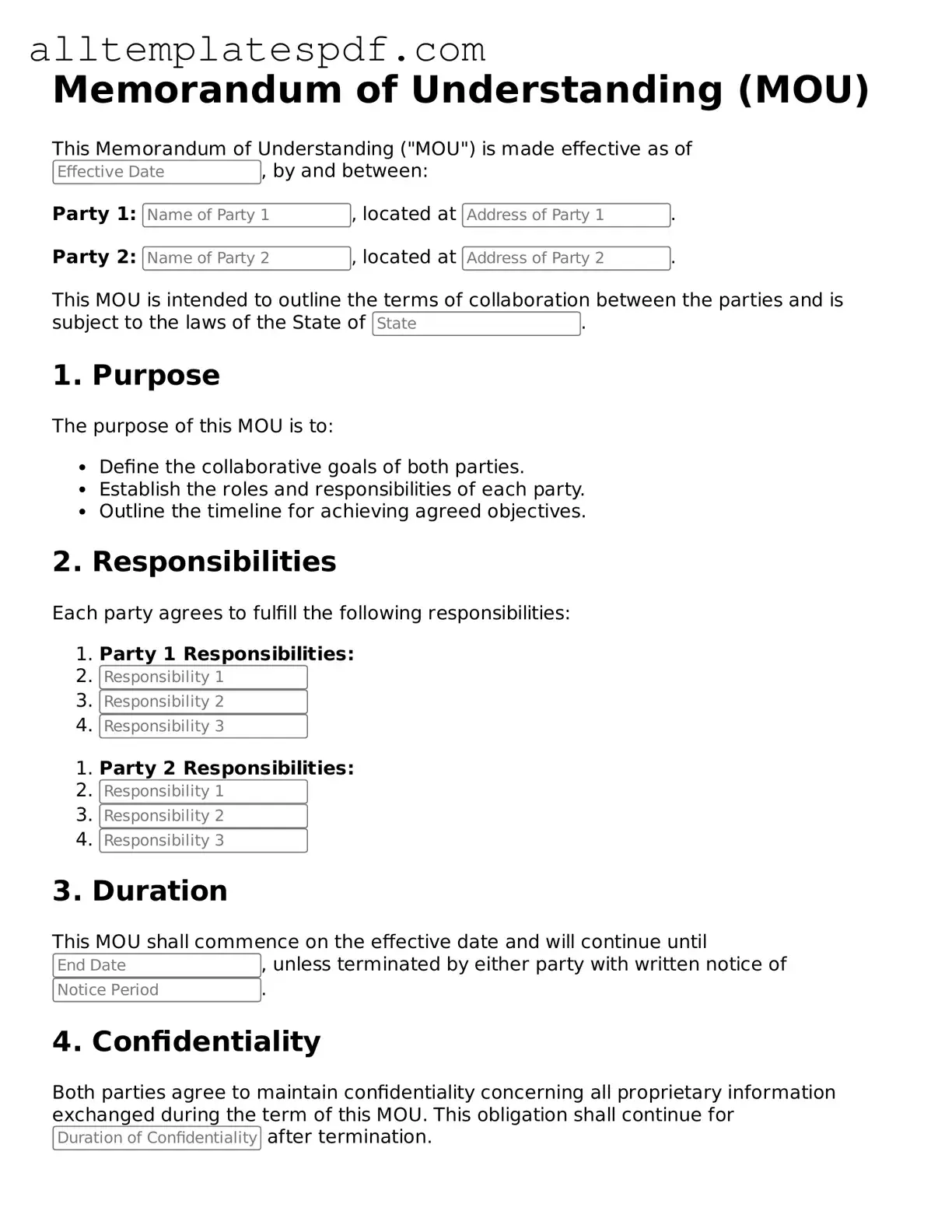When filling out a Memorandum of Understanding (MOU) form, individuals often overlook critical details that can lead to misunderstandings or disputes later on. One common mistake is failing to clearly define the purpose of the agreement. Without a well-articulated purpose, parties may have differing interpretations of what they are agreeing to, which can create confusion down the line.
Another frequent error is neglecting to specify the roles and responsibilities of each party involved. Each participant should understand their obligations and contributions to the agreement. If these roles are vague or omitted, accountability may become an issue, resulting in frustration and potential conflicts.
Additionally, people sometimes forget to include timelines or deadlines for specific actions. A lack of clear timelines can lead to delays in execution and may cause one party to feel that the other is not fulfilling their commitments. Establishing a timeline helps keep everyone on track and accountable.
Moreover, individuals may overlook the importance of including a dispute resolution clause. This clause outlines how disagreements will be handled if they arise. Without it, parties may find themselves at an impasse, unsure of how to proceed when conflicts occur.
Another mistake is using overly complex language or jargon that may not be understood by all parties. An MOU should be clear and straightforward. If the language is confusing, it can lead to misinterpretations and ultimately undermine the agreement.
Finally, individuals often forget to review the document thoroughly before signing. Skimming through the MOU can lead to missing important details or clauses. Taking the time to carefully read and understand the agreement ensures that all parties are on the same page and are fully aware of what they are committing to.
